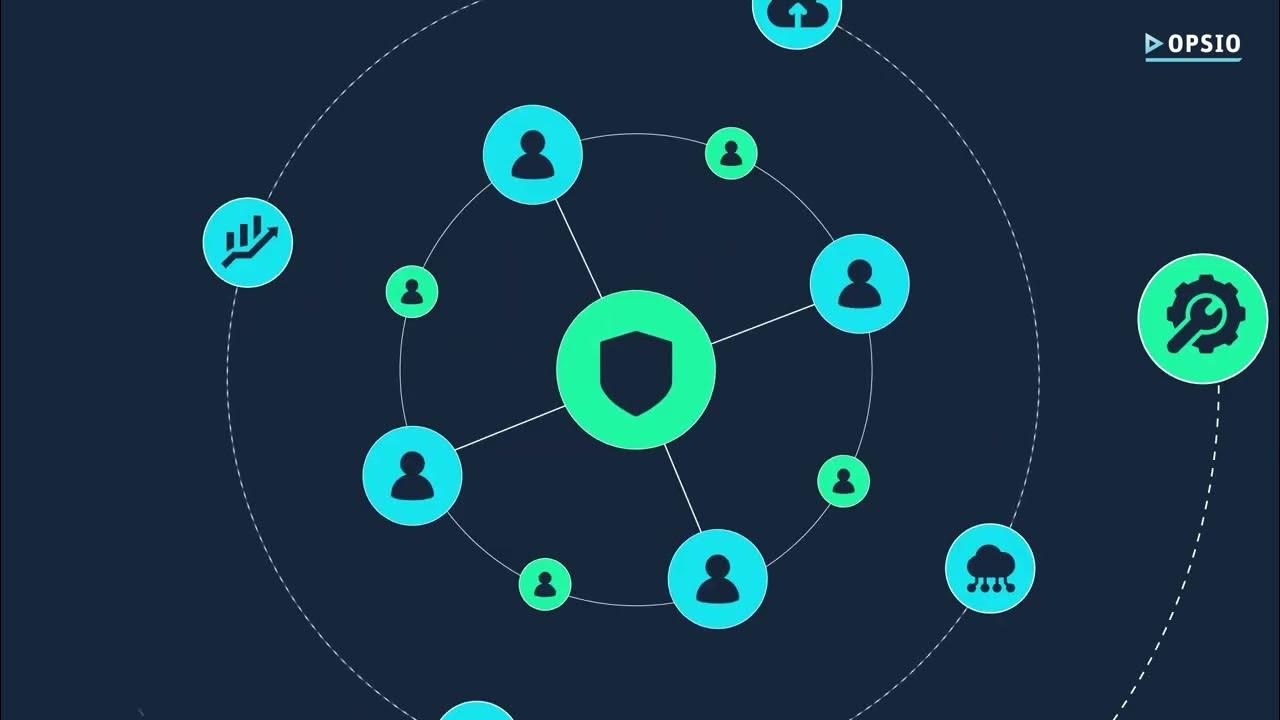Opsio Cloud Disaster Recovery Services
Cloud Disaster Recovery Service for Business Continuity
As part of cloud disaster recovery services, Opsio utilizes cloud technologies to minimize the risk of losing data and also implements responsive strategies and preventive measures to make sure that your data is secure.
Introduction
The Importance of Equipping Businesses with Disaster Management Solutions
Businesses that rely on cloud infrastructures are vulnerable to disruptions for various reasons. During such a time, it is imperative to have a disaster recovery plan for cloud services in place. It makes sure that organizations experience minimal downtime and reduced impact on business operations. Opsio’s cloud Disaster Recovery (DR) services ensure that businesses have a backup of their IT infrastructure by utilizing advanced recovery and failover solutions, which are triggered automatically when systems fail or disasters occur.
What is Cloud Disaster Recovery Service?
Eliminate Business Downtime and Data Loss with Opsio
Organizations increasingly face difficulties due to system failure, natural calamities, human error, or cyberattacks. Such incidents may lead to unforeseen downtime, which hampers business operations. To tackle this, recovery plans need to be designed by utilizing cloud Disaster Recovery services. Opsio’s expert team ensures that businesses stay equipped for these challenging scenarios. Cloud Disaster Recovery Service enables enterprises to back up and restore their application data by utilizing cloud infrastructure, which allows organizations to stay confident in their business’s capability to quickly recover from unforeseen disruptions without much difficulty.
Why Utilize Cloud Disaster Recovery for Your Business?
Business stability made simple with Cloud Disaster Recovery Plan
Business resilience is a significant parameter that defines the success of an organization. Opsio’s disaster management services involve thorough risk evaluation to identify potential threats to operations and perform Business Impact Analysis (BIA). The analysis becomes a base for the solutions provided to resolve the threats that were identified previously. As part of our cloud Disaster Recovery services, we employ data replication, automated failovers, and other preventive measures to enable businesses to withstand the disruptions and face adverse situations confidently.

Expert cloud DR services
round-the-clock
Our Services
Cloud Disaster Recovery Services for Maximum Business Resilience and Continuity

Data Protection
The expert team at Ospio understands the significance of data security. Our services utilize cloud technologies to reduce risks and automate backups of all crucial data to make sure that businesses don’t face any issues in times of adversity.

Risk Evaluation
Opsio’s team ensures that they perform Business Impact Analysis and proper identification of risks. We analyze access controls, encryption processes, and backup methods to ensure the safety of your data.

Customized Solutions
Our expert team is capable of not just providing solutions but offering solutions that your business requires after carefully analyzing its infrastructure and suggesting recovery mechanisms that align with your business objectives.

Effective Collaboration
Our disaster recovery service involves prioritizing proper communication with our client’s technical team to make sure that our recovery plan supports all areas of their organization and is in sync with their stakeholders’ expectations.

Disaster Management Expertise
One of the most important solutions that businesses should prioritize is disaster management services. Opsio’s expert team is highly equipped with the expertise to handle crises faced by enterprises during disastrous events like system issues, cyberattacks, and natural disasters.

Cost-efficient Solutions
Opsio’s team can enable businesses to take preemptive measures to establish cloud Disaster Recovery (DR) services, which can enable businesses to avoid unnecessary expenses that may occur due to unexpected disruptions and downtime.
Key Benefits
The Impact of Cloud Disaster Services on Business Operations
- Risk assessment strategies to drive long-term data security
- Regular data and system backups to protect significant business assets
- Periodic Disaster Recovery (DR) drills to analyze and enhance recovery methods.
- Improved business resilience with customized strategies that align with your business requirements
- Storage of backup data in secure and accessible locations.
- Continued effort to offer innovative and effective recovery solutions
- Utilizing advanced cloud technologies to drive quick responses and system restorations.
- Expert support from a skilled team in delivering reliable disaster recovery solutions

Industries We Serve
Customized Cloud Disaster Recovery Solutions for Every Industry
Our approach to cloud migration challenges is comprehensive, addressing not just the technical aspects, but also the operational and
strategic impacts on your business. Opsio’s cloud migration experts
Technology Providers
Experiencing frequent downtime and loss of data can be damaging to their reputation. Hence, cloud Disaster Recovery Services offered by Opsio enable quick resolution of such issues.
Public Sectors
Public sectors usually cannot afford to have service disruptions. Cloud based Disaster Recovery Services enable quick resolution and restoration of systems after outages.
BFSI
If the BFSI industry faces ransomware attacks, Opsio can swiftly recover the affected data from a clean backup.
Telecom
Customer details and billing information are crucial to telecom-related businesses. Downtime in such areas can be avoided through disaster recovery efforts.
Stay Ahead of the Cloud Curve
Get monthly insights on cloud transformation, DevOps strategies, and real-world case studies from the Opsio team.
Why Choose Opsio for Cloud Disaster Recovery Service?
Opsio, an Expert Provider of Disaster Management Solutions
With the help of our experts, who are equipped with deep knowledge of cloud disaster recovery services, Opsio enables businesses to stay equipped with solutions that are designed to meet current industry standards and can also withstand future disruptions.
Cloud Consultancy Evolution: Your Opsio Roadmap To Success
Customer Introduction
Introductory meeting to explore needs, goals, and next steps.
Proposal
Onboarding
The shovel hits the ground through onboarding of our agreed service collaboration.

Assessment Phase
Compliance Activation
Run & Optimize
Cloud Disaster Recovery Service FAQ
How quickly can your cloud disaster recovery service restore our data and systems in the event of a disaster?
As an IT consultant specializing in cloud disaster recovery services, I understand the critical importance of ensuring that your data and systems can be restored quickly in the event of a disaster. At Opsiocloud.com, we have designed our disaster recovery service to provide rapid restoration of your data and systems, minimizing downtime and ensuring that your business can continue to operate smoothly.
Our cloud disaster recovery service utilizes advanced technologies and processes to replicate your data and systems in real-time to a secure offsite location. This means that in the event of a disaster, such as a cyberattack, natural disaster, or hardware failure, your data and systems can be quickly restored from the offsite backup, ensuring minimal disruption to your business operations.
Our team of experienced IT professionals is available 24/7 to assist with the restoration process, ensuring that your data and systems are recovered as quickly as possible. We understand that time is of the essence in a disaster situation, and we prioritize speed and efficiency in our disaster recovery service.
By partnering with Opsiocloud.com for your disaster recovery needs, you can have peace of mind knowing that your data and systems are protected and that we will work diligently to restore them quickly in the event of a disaster. Our goal is to help your business recover swiftly and minimize any potential impact on your operations.
What measures do you have in place to ensure the security and confidentiality of our data during the cloud disaster recovery process?
As an IT consultant working with Opsiocloud.com, I understand the importance of ensuring the security and confidentiality of your data during the cloud disaster recovery process. To address this critical issue, we have implemented several measures to safeguard your information and maintain compliance with industry standards.
First and foremost, we utilize encryption techniques to protect your data both in transit and at rest. This means that your information is securely encoded to prevent unauthorized access or interception during the disaster recovery process. Additionally, we employ multi-factor authentication protocols to verify the identity of users accessing the system, adding an extra layer of security to prevent unauthorized entry.
Furthermore, we have established strict access controls and permissions to limit who can view, modify, or delete your data. This ensures that only authorized personnel can make changes to your information, reducing the risk of data breaches or leaks. Additionally, we regularly conduct security audits and penetration testing to identify and address any vulnerabilities in our systems, ensuring that your data remains safe and confidential at all times.
In the event of a disaster, we have a comprehensive disaster recovery plan in place to quickly restore your data and minimize downtime. This includes regular backups, redundant systems, and failover mechanisms to ensure that your information is always accessible and secure.
Overall, our commitment to security and confidentiality is unwavering, and we will continue to implement best practices and industry standards to protect your data during the cloud disaster recovery process. Your trust in us is paramount, and we will do everything in our power to uphold that trust and safeguard your information.
How often do you test the effectiveness of your cloud disaster recovery service to ensure it will work seamlessly in the event of a real disaster?
As an IT consultant, it is crucial to regularly test the effectiveness of your cloud disaster recovery service to ensure it will work seamlessly in the event of a real disaster. Testing should be conducted on a regular basis to identify any potential weaknesses or issues that may arise during an actual disaster scenario. By testing the effectiveness of your cloud disaster recovery service, you can ensure that your organization is prepared to quickly and efficiently recover from any potential disruptions.
There are several key factors to consider when testing the effectiveness of your cloud disaster recovery service. First, it is important to establish a regular testing schedule to ensure that all aspects of your disaster recovery plan are thoroughly evaluated. This may include testing the backup and recovery processes, as well as the overall performance of your cloud infrastructure.
Additionally, it is important to involve key stakeholders in the testing process to ensure that everyone is familiar with their roles and responsibilities in the event of a disaster. This may include conducting tabletop exercises or simulations to test the response of various teams within your organization.
By regularly testing the effectiveness of your cloud disaster recovery service, you can identify any potential weaknesses or issues that may need to be addressed. This proactive approach can help to ensure that your organization is well-prepared to respond to any potential disasters and minimize the impact on your operations. Ultimately, regular testing is essential to maintaining the resilience and reliability of your cloud disaster recovery service.
